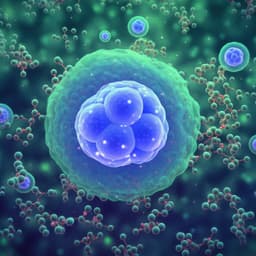
Medicine and Health
Crystal structure of adenosine A<sub>2A</sub> receptor in complex with clinical candidate Etrumadenant reveals unprecedented antagonist interaction
T. Claff, J. G. Schlegel, et al.
Discover groundbreaking insights into the adenosine A2A receptor as a cancer immunotherapy target through this exciting study by Tobias Claff and colleagues. Their exploration unveils unique interactions of Etrumadenant, reshaping our understanding of AR antagonists and paving the way for future drug design.
~3 min • Beginner • English
Related Publications
Explore these studies to deepen your understanding of the subject.







